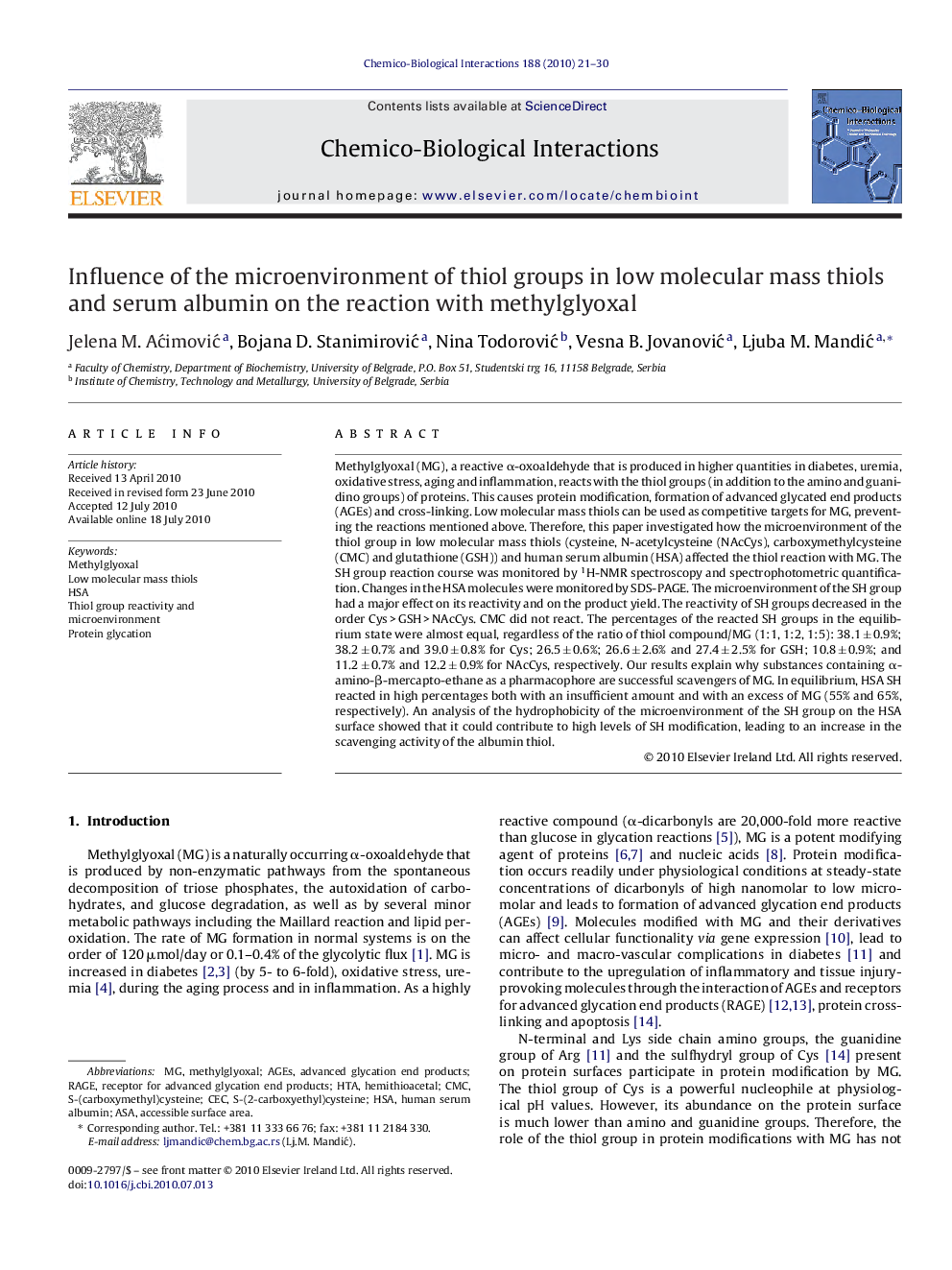| کد مقاله | کد نشریه | سال انتشار | مقاله انگلیسی | نسخه تمام متن |
|---|---|---|---|---|
| 2581042 | 1130171 | 2010 | 10 صفحه PDF | دانلود رایگان |

Methylglyoxal (MG), a reactive α-oxoaldehyde that is produced in higher quantities in diabetes, uremia, oxidative stress, aging and inflammation, reacts with the thiol groups (in addition to the amino and guanidino groups) of proteins. This causes protein modification, formation of advanced glycated end products (AGEs) and cross-linking. Low molecular mass thiols can be used as competitive targets for MG, preventing the reactions mentioned above. Therefore, this paper investigated how the microenvironment of the thiol group in low molecular mass thiols (cysteine, N-acetylcysteine (NAcCys), carboxymethylcysteine (CMC) and glutathione (GSH)) and human serum albumin (HSA) affected the thiol reaction with MG. The SH group reaction course was monitored by 1H-NMR spectroscopy and spectrophotometric quantification. Changes in the HSA molecules were monitored by SDS-PAGE. The microenvironment of the SH group had a major effect on its reactivity and on the product yield. The reactivity of SH groups decreased in the order Cys > GSH > NAcCys. CMC did not react. The percentages of the reacted SH groups in the equilibrium state were almost equal, regardless of the ratio of thiol compound/MG (1:1, 1:2, 1:5): 38.1 ± 0.9%; 38.2 ± 0.7% and 39.0 ± 0.8% for Cys; 26.5 ± 0.6%; 26.6 ± 2.6% and 27.4 ± 2.5% for GSH; 10.8 ± 0.9%; and 11.2 ± 0.7% and 12.2 ± 0.9% for NAcCys, respectively. Our results explain why substances containing α-amino-β-mercapto-ethane as a pharmacophore are successful scavengers of MG. In equilibrium, HSA SH reacted in high percentages both with an insufficient amount and with an excess of MG (55% and 65%, respectively). An analysis of the hydrophobicity of the microenvironment of the SH group on the HSA surface showed that it could contribute to high levels of SH modification, leading to an increase in the scavenging activity of the albumin thiol.
Figure optionsDownload as PowerPoint slideResearch highlights▶ Microenvironment of SH has effect on its reactivity with MG and product yield. ▶ Substances with α-amino-β-mercapto-ethan pharmacophore are successful MG scavengers. ▶ Protein thiol group reactivity depends on its microenvironment hydrophobicity. ▶ Microenvironment of HSA SH increases of its capability to scavenge MG molecules.
Journal: Chemico-Biological Interactions - Volume 188, Issue 1, 6 October 2010, Pages 21–30